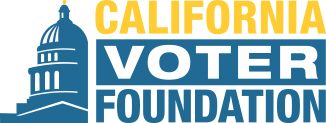Excerpts:
Voters across Greater Sacramento have been turning in their ballots for the midterm elections before and on Election Day across several fronts — mail-in ballots, in-person voting and early votes — and may not be solidified for weeks.
Although California has aimed to make the voting process more accessible — most recently by passing legislation that sends every registered voter a vote-by-mail ballot in 2021 — there are still several barriers complicating participation.
Take vote-by-mail, which Kim Alexander with the California Voter Foundation says favors older homeowner voters over others, regardless of their registered party, because not everyone is comfortable using the mail and not everyone has a reliable address.
That can disproportionately affect those with unstable housing — like college students, who may move around a lot.
“We’re asking young voters to do things they’re not familiar with: using the Postal Service, and putting something in an envelope and making a signature,” Alexander said.
A lack of clear information can also be a barrier, if not a deterrent, to some first-time voters, who may want to register to vote in their home county while attending college elsewhere. That was Roan Thibault’s experience; he said he was surprised by how confusing the process was.
“I had to guess if I was doing the right thing as I re-registered to vote and play the waiting game for my ballot to arrive,” Thibault, first-time voter and first-year UC Davis student, said via email. “And students in the dorms like me aren’t in the Davis city limits, so if I wanted to re-register at my college address I wouldn’t have been able to vote in the city elections.”
Transportation and safety may also present barriers to voting, Alexander noted. A 2020 report from the Public Policy Institute of California notes that regions in the state that consolidated vote centers experienced lower turnout compared to those that distributed polling places throughout neighborhoods.
That’s affected voters of color, in particular, some of whom may feel less safe going to neighborhoods that aren’t diverse or that are less familiar to them.
“That person [voting] may not feel comfortable going anywhere in their county, they may not feel welcome going into certain neighborhoods,” she said. “We have to kind of step back and consider the benefits of having neighborhood voting sites where people will know the location, know other people there, be able to walk there [and] not have to have a car to get to them.”
Cynicism about elected officials and their ability to safeguard people’s rights is also affecting some voters’ morale, from first-time to long-time voters. (Full Story)

